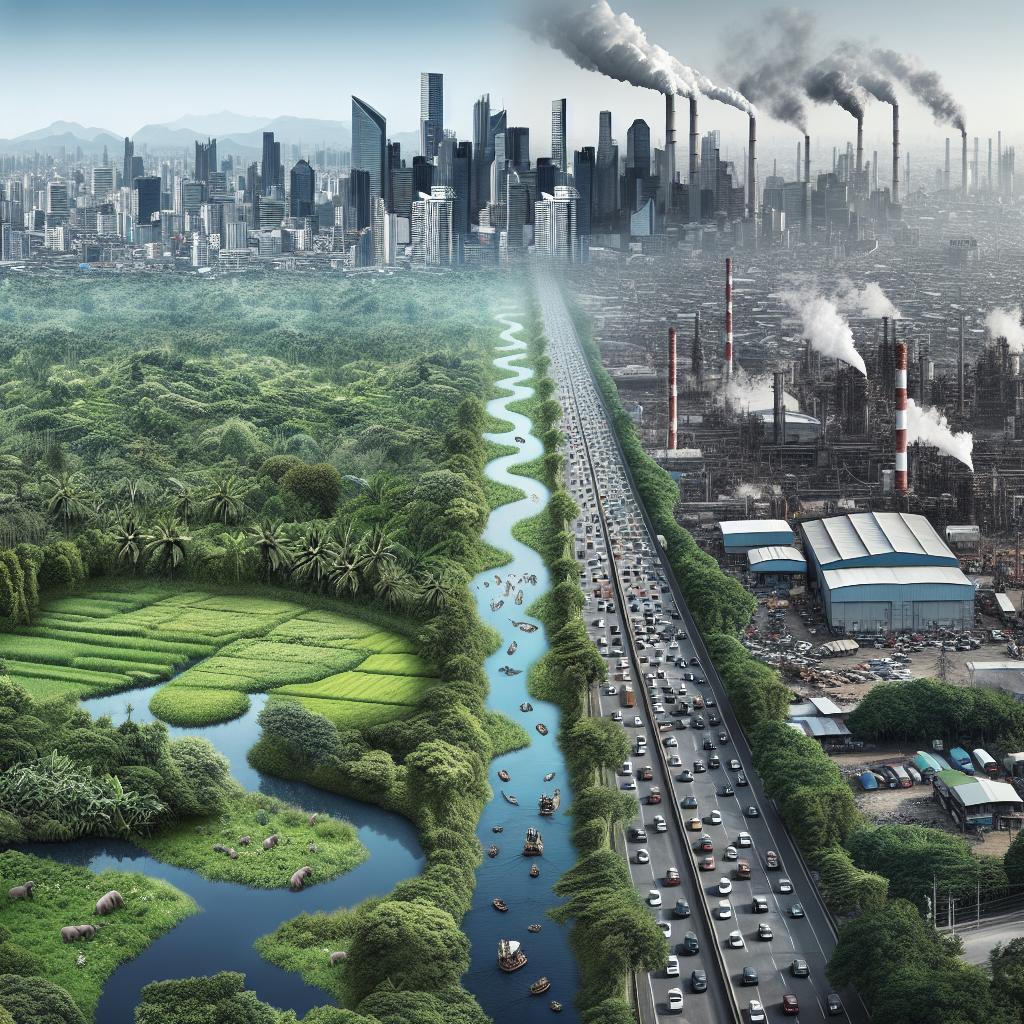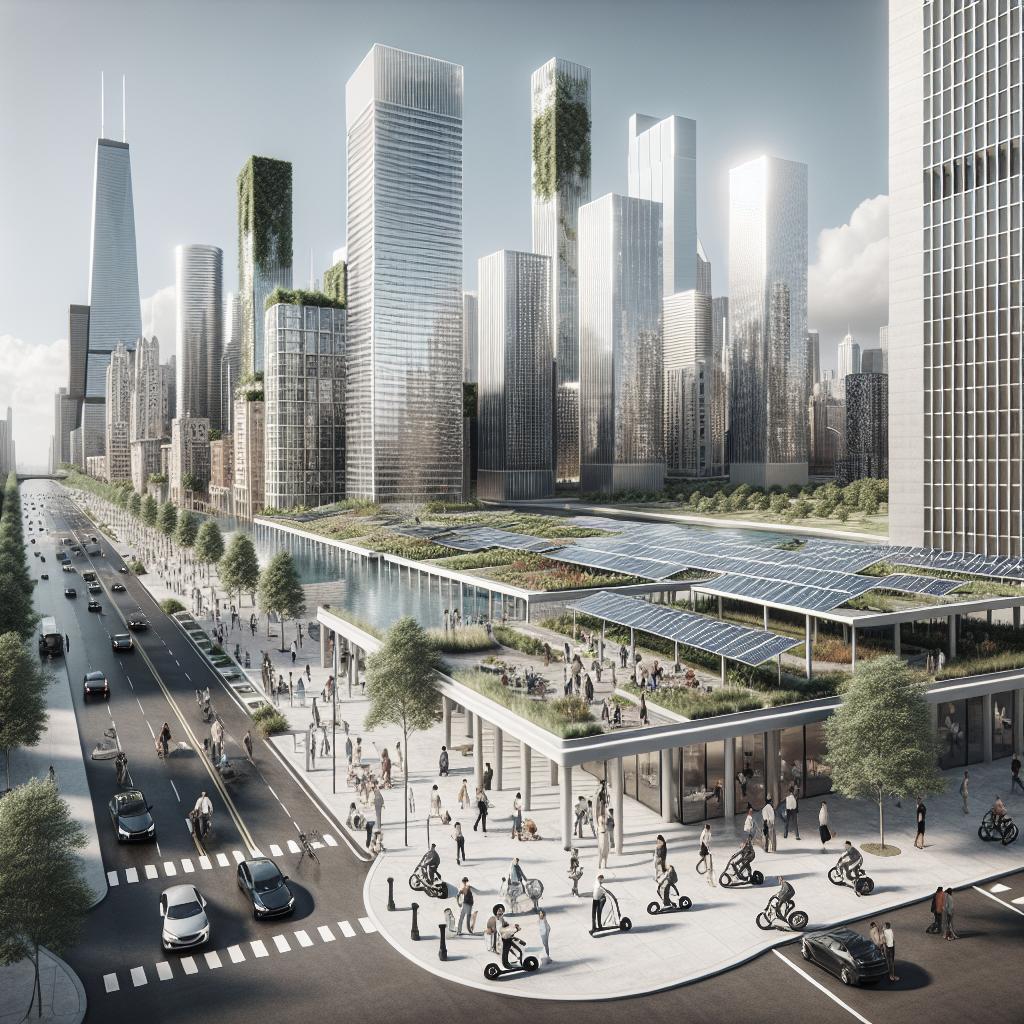<>
Urban Development Strategies: The Magic of Mixed-Use Developments In recent years, urban development has seen a significant shift towards mixed-use developments, where residential, commercial, and recreational spaces coalesce to form vibrant, dynamic communities. This approach to development not only maximizes land use but also cultivates sustainable and economically viable neighborhoods. The blend of various functions within a single development fosters walkability, encourages community building, and enhances the overall quality of life. In this blog post, we will delve into the concept of mixed-use developments, explore their manifold benefits, discuss key strategies for successful implementation, and highlight exemplary case studies. Ultimately, we will show how mixed-use urban development can transform cities into thriving, inclusive, and sustainable hubs.
Urban Development Strategies: The Magic of Mixed-Use Developments
Urban development strategies have evolved to embrace the concept of mixed-use developments. This paradigm shift from segregated zones towards integrated, multi-functional spaces addresses various urban challenges, fostering more cohesive and dynamic communities. By blending residential, commercial, and recreational areas into a single development, cities can achieve both spatial and functional efficiencies. These cohesive spaces not only attract businesses and residents but also contribute to a city’s economic, social, and environmental sustainability. Mixed-use developments represent a significant departure from traditional mono-functional zoning, providing numerous advantages such as reduced traffic congestion, enhanced local economies, and more vibrant, walkable neighborhoods. As cities become denser, the need for innovative development strategies that prioritize accessibility, community, and sustainability has never been more crucial. Mixed-use developments are proving to be a potent solution in addressing these urban challenges.
Defining Mixed-Use Development
A Fusion of Functions
Mixed-use developments are characterized by their integration of various functions within a single development. This can include residential areas on upper floors, commercial retail spaces on ground levels, and recreational amenities like parks or gyms within the same vicinity. This fusion of functions creates a self-sustaining community where residents have easy access to essential services and amenities without needing to travel long distances. The amalgamation of different uses within a single area optimizes land use and maximizes the efficiency of infrastructure investments. This type of development encourages a more sustainable urban form, reducing the overall environmental footprint by minimizing travel needs and integrating green building principles.
A Sense of Place
Beyond the functional blend, mixed-use developments create a sense of place and identity within a community. The seamless interplay between living, working, and leisure spaces fosters a vibrant and unique atmosphere that promotes social interactions and community engagement. This sense of place translates into increased civic pride and a stronger sense of belonging among residents. A well-executed mixed-use development also maintains the cultural and historical essence of a locality, blending modernity with tradition to create a diverse urban fabric. This harmonious blend of the old and new enhances the character of a place, attracting a wide array of demographics and promoting cultural enrichment.
Benefits of Mixed-Use Development
Walkability and Convenience
One of the most notable benefits of mixed-use developments is their promotion of walkability. With residential, commercial, and recreational spaces located within close proximity, residents can easily walk to shops, restaurants, parks, and workplaces. This reduces reliance on automobiles, curbing traffic congestion and lowering carbon emissions. Convenience is another key advantage. Mixed-use developments offer residents a host of amenities and services right at their doorstep, making daily errands more manageable and enhancing the overall quality of life. The presence of various functions in one area also stimulates higher foot traffic and activity, creating lively neighborhoods.
Economic Viability
Economically, mixed-use developments offer substantial benefits for both developers and local governments. By catering to a diverse range of needs, these developments attract a varied demographic, ensuring steady demand for housing, retail, and office space. The resultant increase in property values and tax revenues provides a strong financial incentive for cities to encourage mixed-use projects. Furthermore, mixed-use developments stimulate local economies by nurturing small businesses and startups. The influx of pedestrian traffic creates vibrant commercial corridors where businesses can thrive, fostering entrepreneurship and job creation within the community.
Community Building
Mixed-use developments inherently promote community building by encouraging frequent social interactions among residents. The integration of public spaces, recreational facilities, and event venues within the development offers numerous opportunities for communal activities and gatherings. This, in turn, fosters stronger social bonds and a sense of community among residents. The diversity within mixed-use developments also promotes inclusivity and cross-cultural interactions. By bringing together various socioeconomic groups within a shared space, these developments can bridge social divides and cultivate a more inclusive urban environment.
Strategies for Success
Comprehensive Planning
The success of mixed-use developments hinges on comprehensive and strategic urban planning. Planners must consider the needs and preferences of diverse populations, ensuring a balanced mix of residential, commercial, recreational, and public spaces. Effective planning also requires integrating infrastructure and transportation networks to support the multi-functional nature of the development. Long-term vision and collaboration among stakeholders—developers, local governments, community members, and architects—are essential elements of comprehensive planning. This collective approach ensures that the development aligns with broader urban goals and meets the needs of all parties involved.
Smart Design and Zoning
Smart design and zoning regulations play a critical role in the execution of mixed-use developments. Design principles that prioritize human scale, active street fronts, and integrated public spaces can create attractive and functional urban environments. Mixed-use zoning policies must be flexible enough to accommodate diverse uses while maintaining harmony and cohesion within the development. Architectural design also contributes significantly to the success of mixed-use developments. By fostering aesthetically pleasing and functional spaces, good design can attract residents and businesses while enhancing the overall quality of life for the community.
Diversity of Uses
A fundamental characteristic of successful mixed-use developments is the diversity of uses they encompass. A well-balanced mix of residential units, office spaces, retail shops, entertainment venues, and recreational areas ensures that the development serves a wide array of needs and preferences. This diversity attracts a varied demographic, contributing to the vibrancy and appeal of the community. Ensuring a broad spectrum of uses also enhances the overall resilience and adaptability of the development. Diverse functionalities can mitigate economic volatility by attracting different income streams and creating a more stable and sustainable urban economy.
Public Spaces and Greenery
Public spaces and greenery are integral components of mixed-use developments. Parks, plazas, and green rooftops provide residents with essential recreational areas and foster a connection with nature. These spaces not only enhance the aesthetic appeal of the development but also contribute to the physical and mental well-being of residents. Incorporating green infrastructure and sustainable landscaping practices can support biodiversity, manage stormwater, and reduce heat island effects. Well-designed public spaces also serve as social hubs, encouraging community interactions and activities.
Sustainable Practices
Sustainability is a key consideration in mixed-use developments. Practices such as energy-efficient building designs, renewable energy integration, and sustainable transportation options contribute to the long-term viability and environmental stewardship of the development. Striving for LEED certification or similar sustainability standards can set a benchmark for sustainable urban living. Sustainable mixed-use developments also promote reduced resource consumption and waste generation by emphasizing local sourcing, recycling, and green construction techniques. The integration of sustainable practices helps mitigate the environmental impact of urbanization and contributes to a healthier planet.
Adaptive Reuse
Adaptive reuse, or repurposing existing structures, is a strategy that aligns well with mixed-use development principles. Transforming unused or underutilized buildings into vibrant mixed-use spaces preserves the architectural heritage and character of an area while reducing the carbon footprint associated with new construction. This approach revitalizes neighborhoods, bringing new life to spaces that might otherwise remain vacant or derelict. Adaptive reuse can also enhance the economic appeal of a development by taking advantage of existing infrastructure and location benefits.
Community Engagement
Engaging the community in the development process is crucial for the success of mixed-use projects. By involving residents and stakeholders in planning and decision-making, developers can better understand community needs and preferences. This inclusive approach fosters a sense of ownership and connection among future residents and businesses. Community engagement also helps identify potential challenges and opportunities early in the planning process, facilitating more effective and responsive development strategies. By building trust and collaboration, developers can ensure that mixed-use developments are more attuned to the aspirations and values of the communities they serve.
Case Studies in Success
The High Line, New York City
The High Line in New York City is a sterling example of successful mixed-use development. Originally an elevated rail line, the High Line has been transformed into a dynamic public park that weaves through residential and commercial areas. This innovative adaptation of urban space has revitalized the surrounding neighborhoods, attracting millions of visitors annually. The High Line’s integration of green spaces, art installations, and community events fosters a lively and interactive environment. It has also spurred economic growth, with new residential and commercial developments emerging along its length, showcasing the transformative power of mixed-use development in urban regeneration.
The Pearl District, Portland
Portland’s Pearl District exemplifies how mixed-use development can lead to urban revitalization. Once an industrial area filled with warehouses, the Pearl District has been reimagined as a vibrant, mixed-use neighborhood with a blend of residential lofts, art galleries, boutiques, restaurants, and public parks. The district’s emphasis on walkability and sustainability, along with its rich cultural offerings, has made it one of Portland’s most desirable neighborhoods. The Pearl District’s transformation demonstrates the potential of mixed-use development to foster economic vitality, community engagement, and sustainable urban living.
Creating Urban Magic
Mixed-use urban development represents a powerful strategy for creating sustainable, vibrant, and inclusive urban spaces. By leveraging a fusion of functions, smart design principles, and comprehensive planning, these developments can transform cities into thriving hubs of activity and community. The benefits of mixed-use developments—ranging from enhanced walkability and economic viability to community building and sustainability—make them an attractive model for future urban planning. Below is a summary table detailing the key points discussed in this blog post: “`
| Section | Key Points |
|---|---|
| Defining Mixed-Use Development |
|
| Benefits of Mixed-Use Development |
|
| Strategies for Success |
|
| Case Studies in Success |
|
“` Through the lens of real-world examples like the High Line and the Pearl District, we see the tremendous potential of mixed-use developments to reshape urban landscapes. As cities continue to grow and evolve, embracing mixed-use development strategies can create more livable, sustainable, and economically vibrant environments for future generations.


